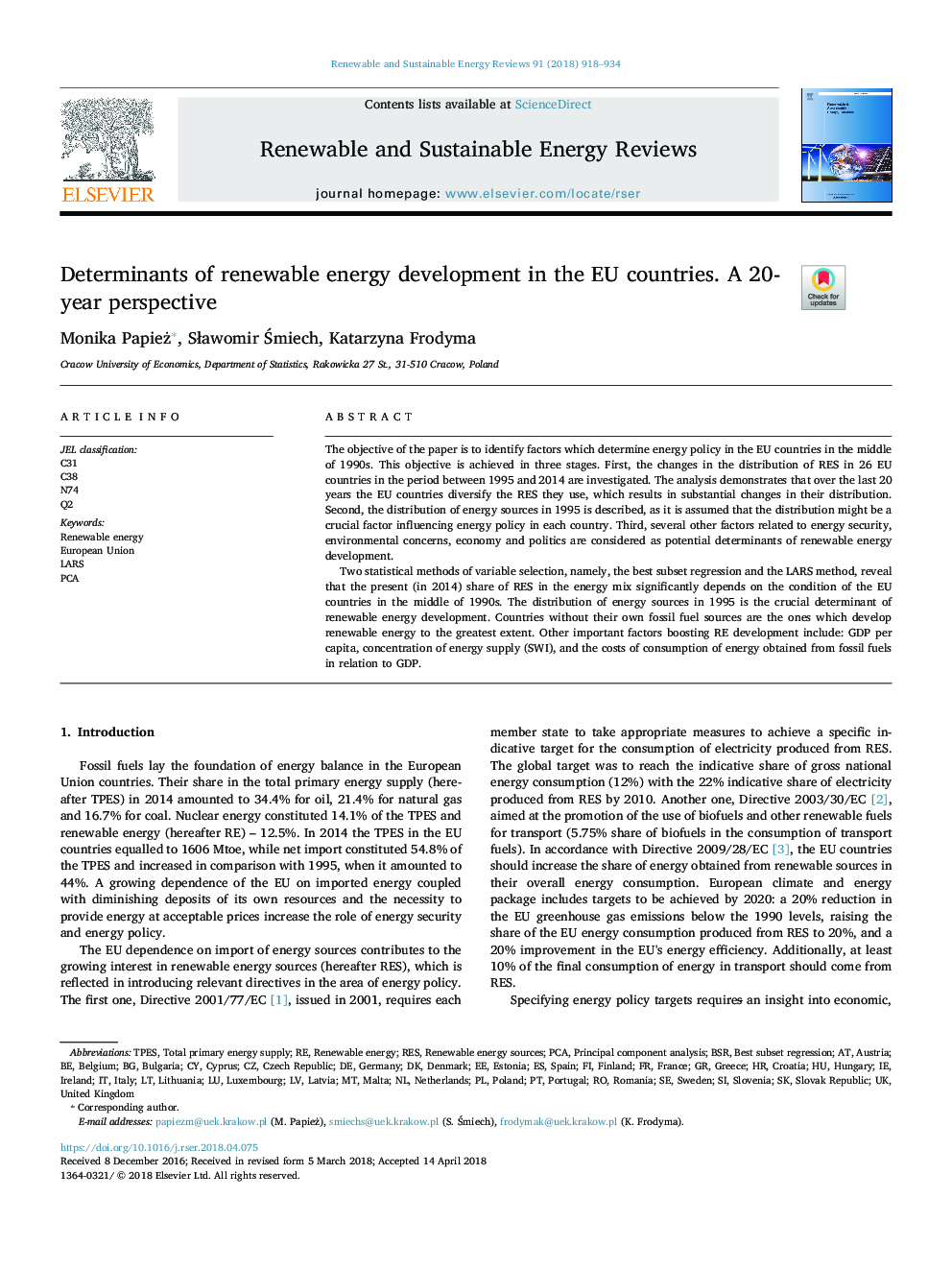| Article ID | Journal | Published Year | Pages | File Type |
|---|---|---|---|---|
| 8111242 | Renewable and Sustainable Energy Reviews | 2018 | 17 Pages |
Abstract
Two statistical methods of variable selection, namely, the best subset regression and the LARS method, reveal that the present (in 2014) share of RES in the energy mix significantly depends on the condition of the EU countries in the middle of 1990s. The distribution of energy sources in 1995 is the crucial determinant of renewable energy development. Countries without their own fossil fuel sources are the ones which develop renewable energy to the greatest extent. Other important factors boosting RE development include: GDP per capita, concentration of energy supply (SWI), and the costs of consumption of energy obtained from fossil fuels in relation to GDP.
Keywords
RESLARSN74C31C38BSRPCATPEsGermanyEuropean UnionAustriaEstoniaSloveniaSpainRenewable energyItalyIrelandBulgariaBelgiumPrincipal component analysisSlovak RepublicCzech RepublicDenmarkRomaniaSwedenFranceFinlandCyprusLatviaPolandLuxembourgLithuaniaMaltaHungaryRenewable energy sourcesNetherlandsUnited KingdomPortugalCroatiatotal primary energy supplyGreece
Related Topics
Physical Sciences and Engineering
Energy
Renewable Energy, Sustainability and the Environment
Authors
Monika Papież, SÅawomir Åmiech, Katarzyna Frodyma,
